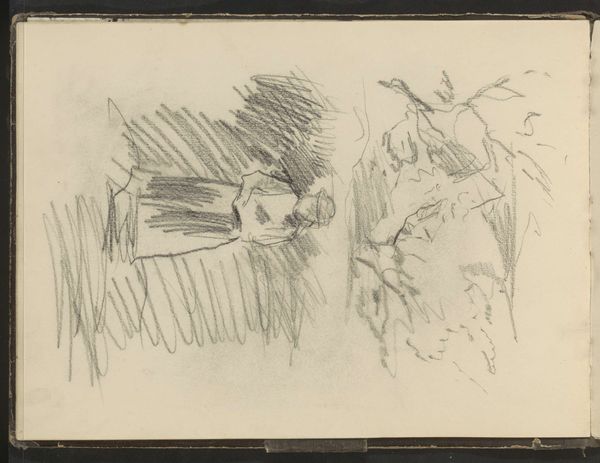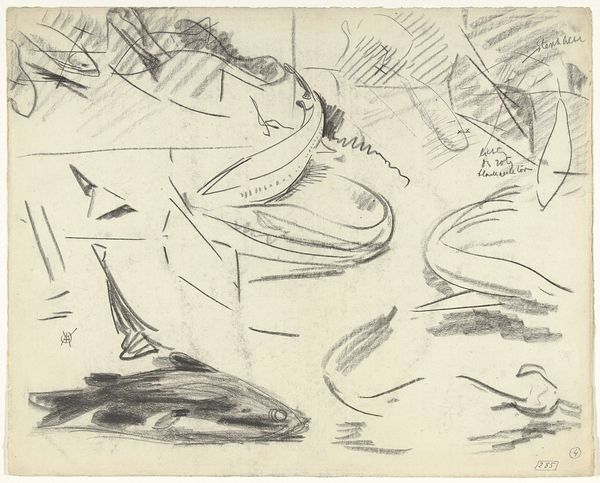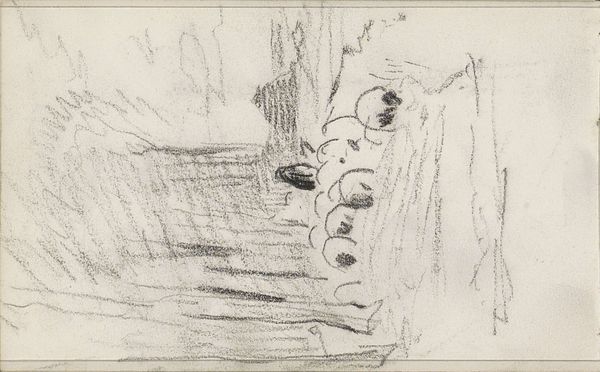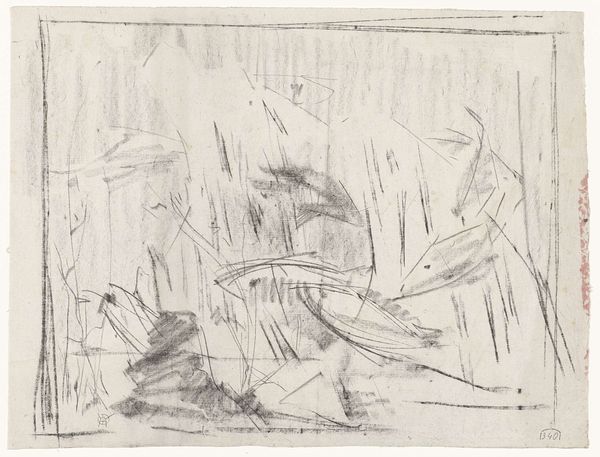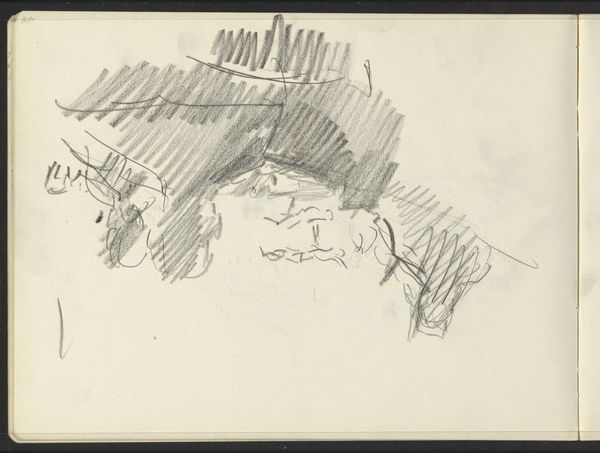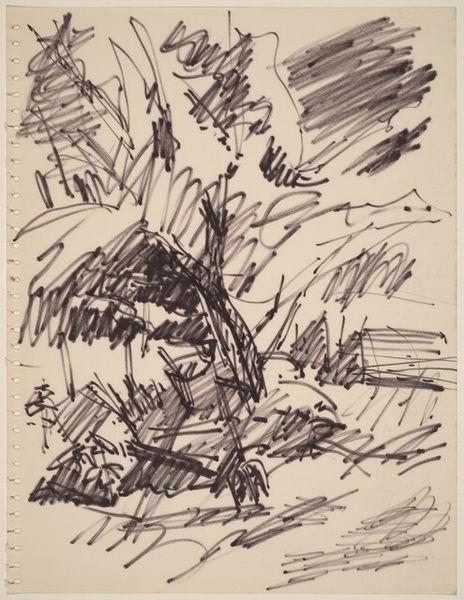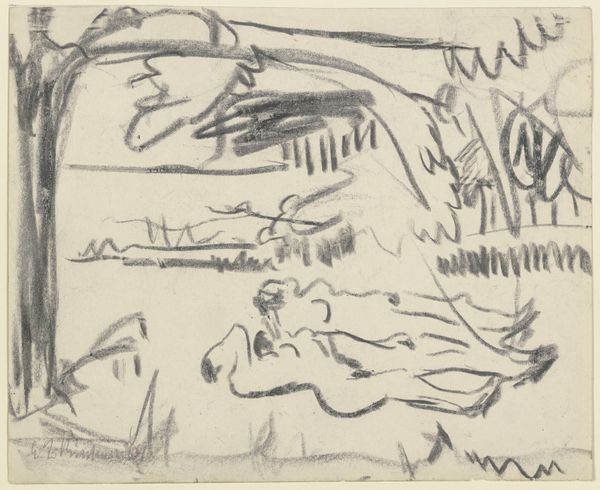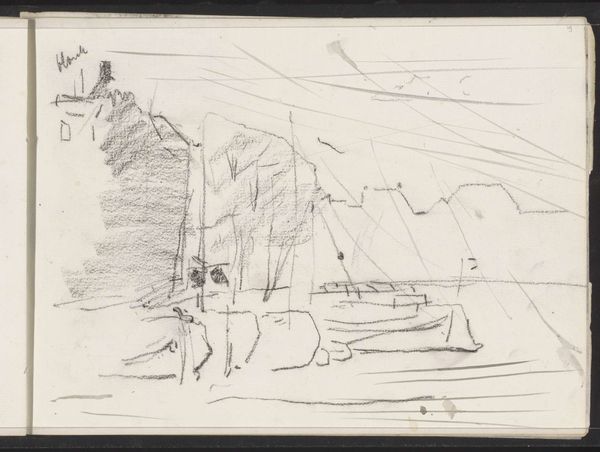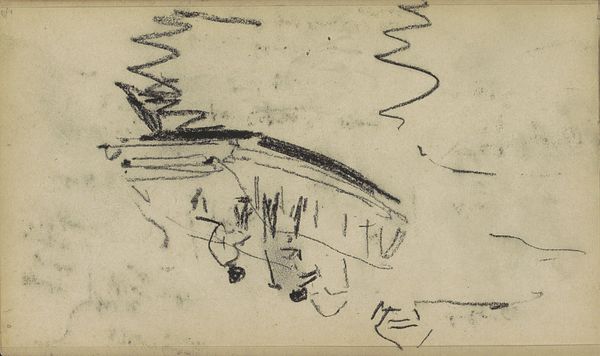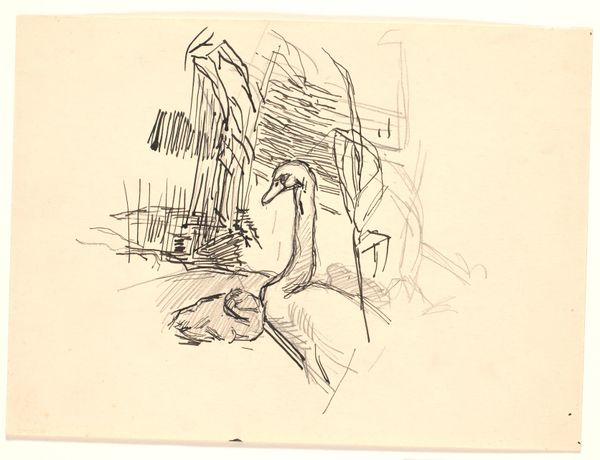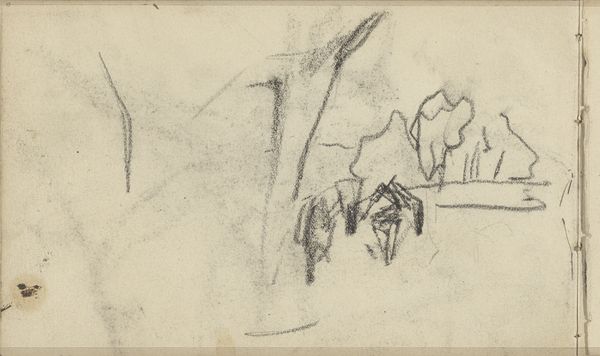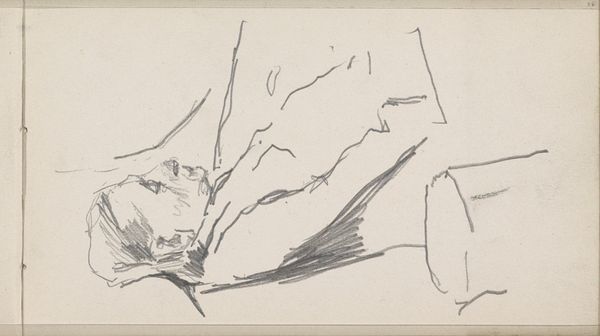
drawing, graphite
#
drawing
#
landscape
#
abstraction
#
graphite
Dimensions: 226 mm (height) x 312 mm (width) (bladmaal)
Editor: So, here we have Edvard Weie's "Landskab fra en have med en halvrund havebænk," or "Landscape from a Garden with a Semicircular Garden Bench," created sometime between 1920 and 1925. It’s a graphite drawing, and what strikes me most is how unfinished it feels. Almost like a preliminary sketch. What stands out to you in this piece? Curator: What grabs my attention is the labour evident in each graphite mark. Consider Weie's conscious choices regarding materials: graphite’s accessibility democratizes the artistic process. The repetitive, almost meditative strokes of the graphite—are they merely outlining the scene, or are they an exploration of the artist's engagement with the landscape itself? Editor: That's an interesting perspective. It never occurred to me to think about it that way. Curator: It’s also worth pondering the social context: landscape art has historically been aligned with the leisure class, showcasing property and privilege. How does Weie’s seemingly ‘unfinished’ quality play with or challenge that history? Does the choice of drawing over painting offer a subtle critique? Editor: I see what you mean! The use of a humble material like graphite, combined with the sketch-like quality, might be a deliberate comment on traditional, idealized landscape paintings. It's less about portraying a grand vista and more about the process of seeing. Curator: Exactly! It invites us to consider the relationship between artistic labour, material value, and social commentary. The landscape becomes less of a romantic ideal and more a site of production and contemplation. What I'm wondering is whether the apparent abstraction and lack of clear details a rebellion to how landscape paintings where consumed during that period. Editor: This has totally reshaped how I see this seemingly simple sketch! It's more than just a quick study; it's a commentary on art production and social class. Thanks for illuminating this new lens on Weie’s work. Curator: Likewise, considering your insights allows us to revisit these foundational questions and uncover fresh ways of approaching works of art and interpreting them, moving beyond our own limited experiences.
Comments
No comments
Be the first to comment and join the conversation on the ultimate creative platform.
